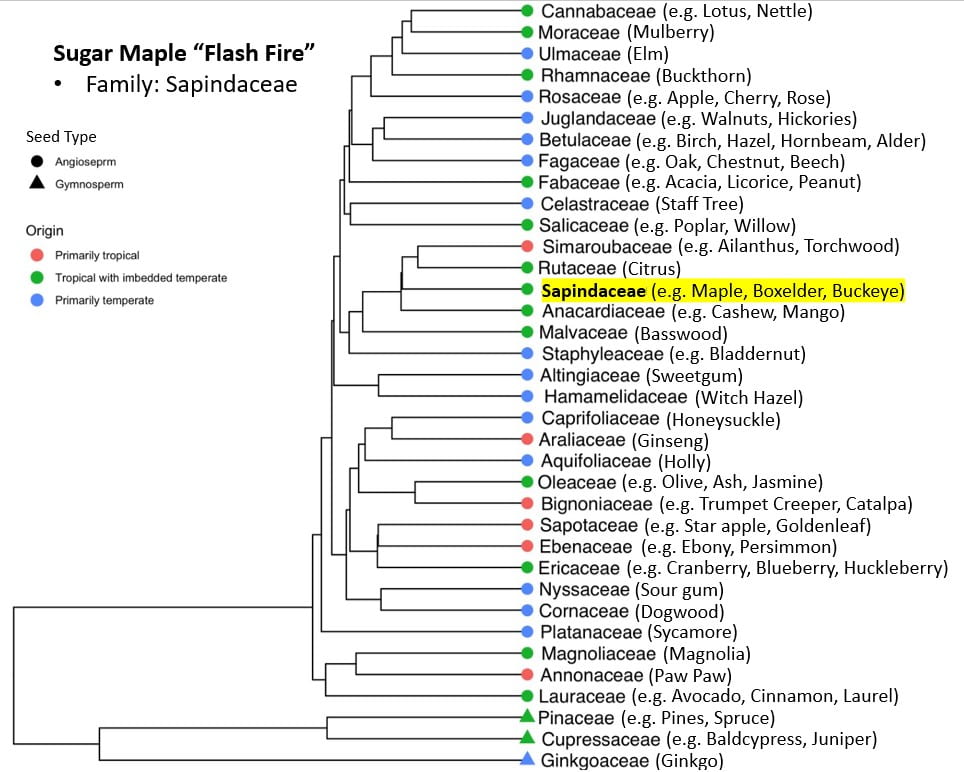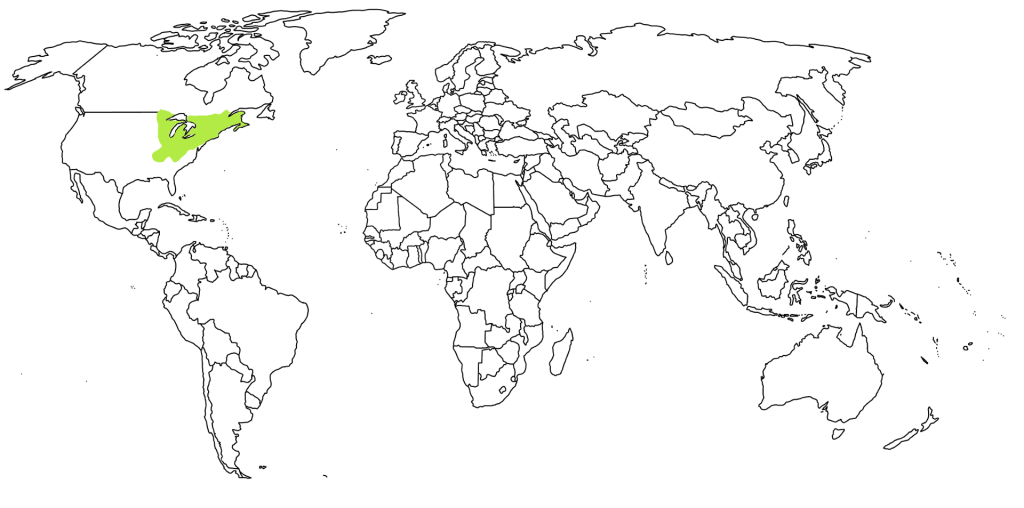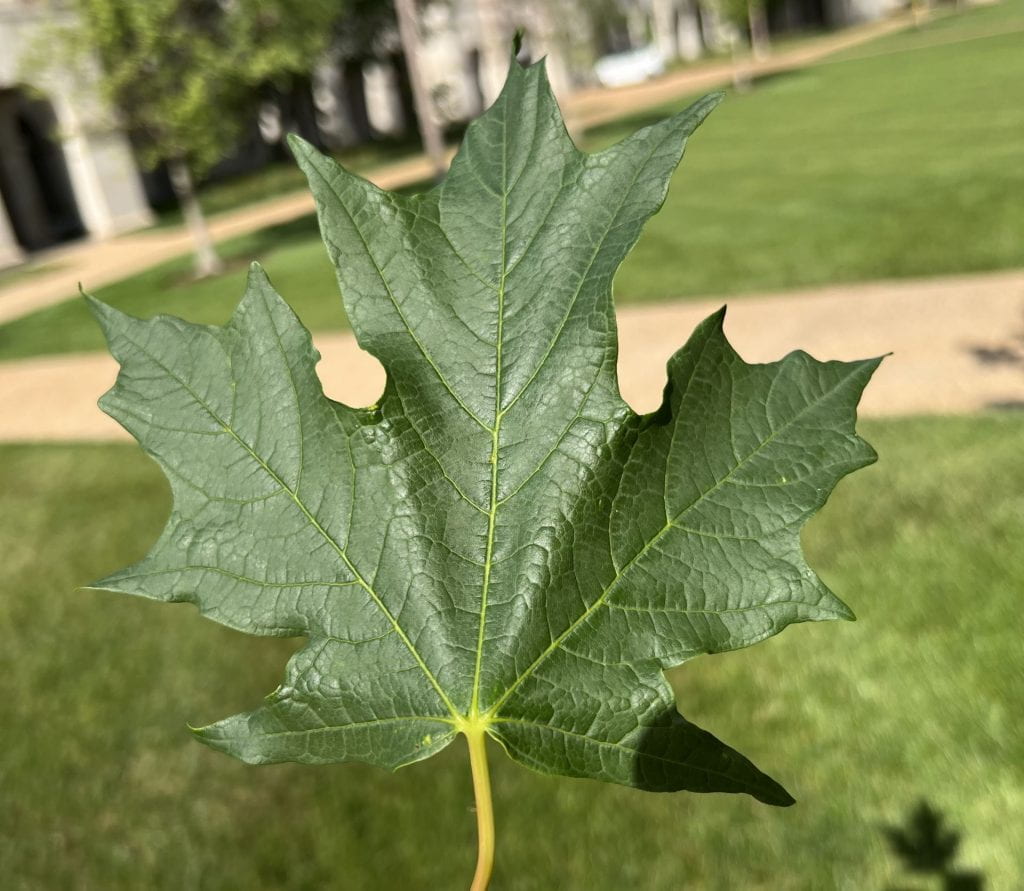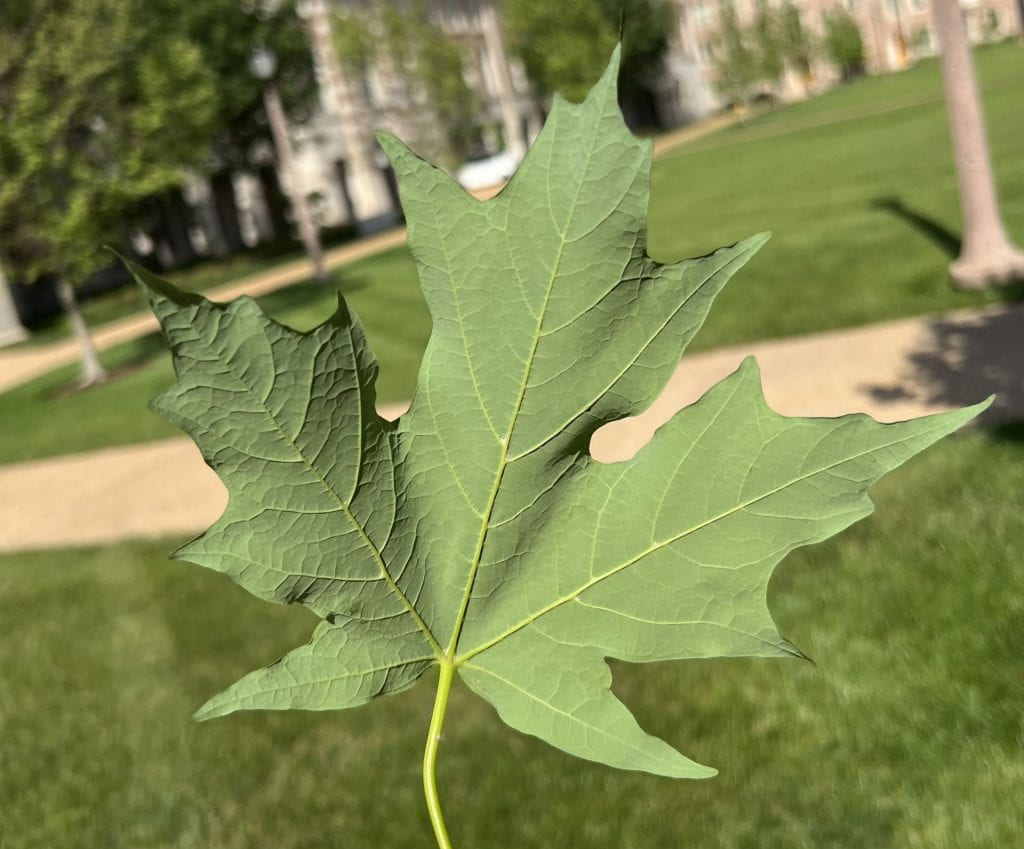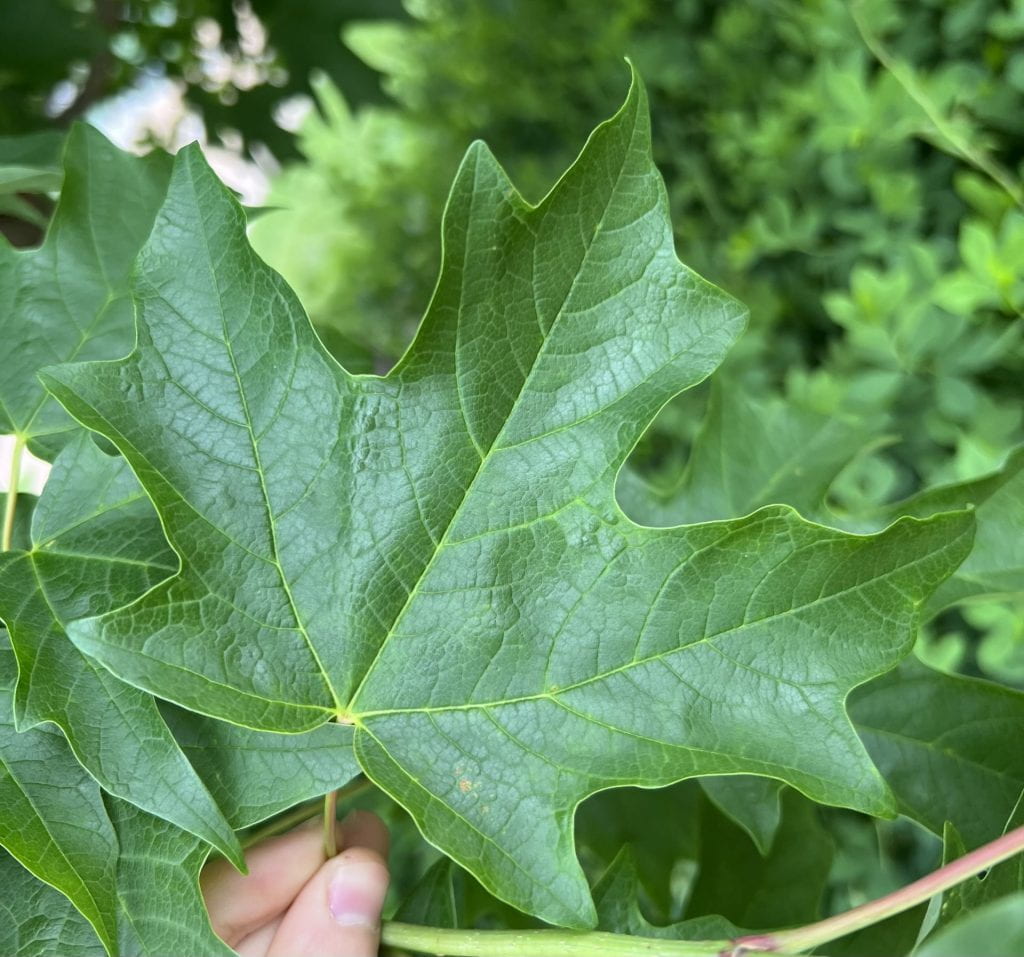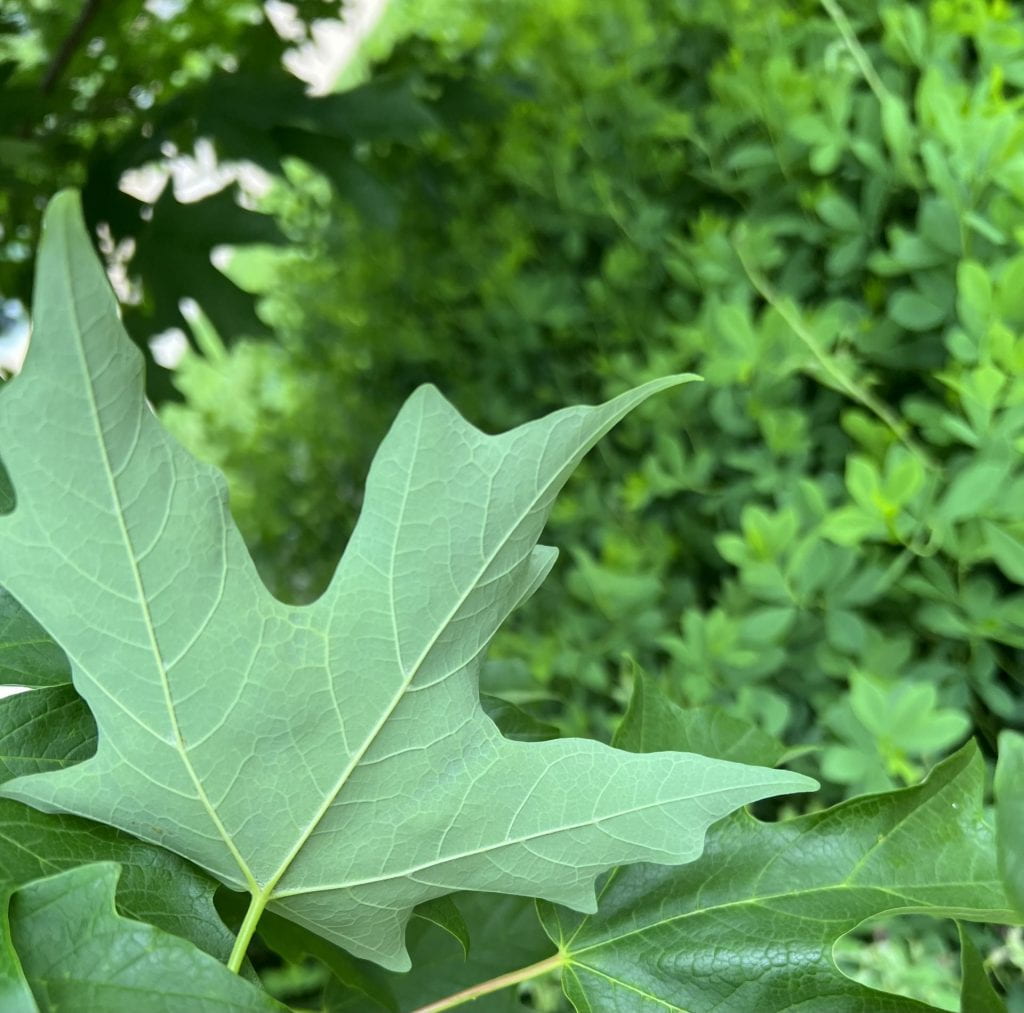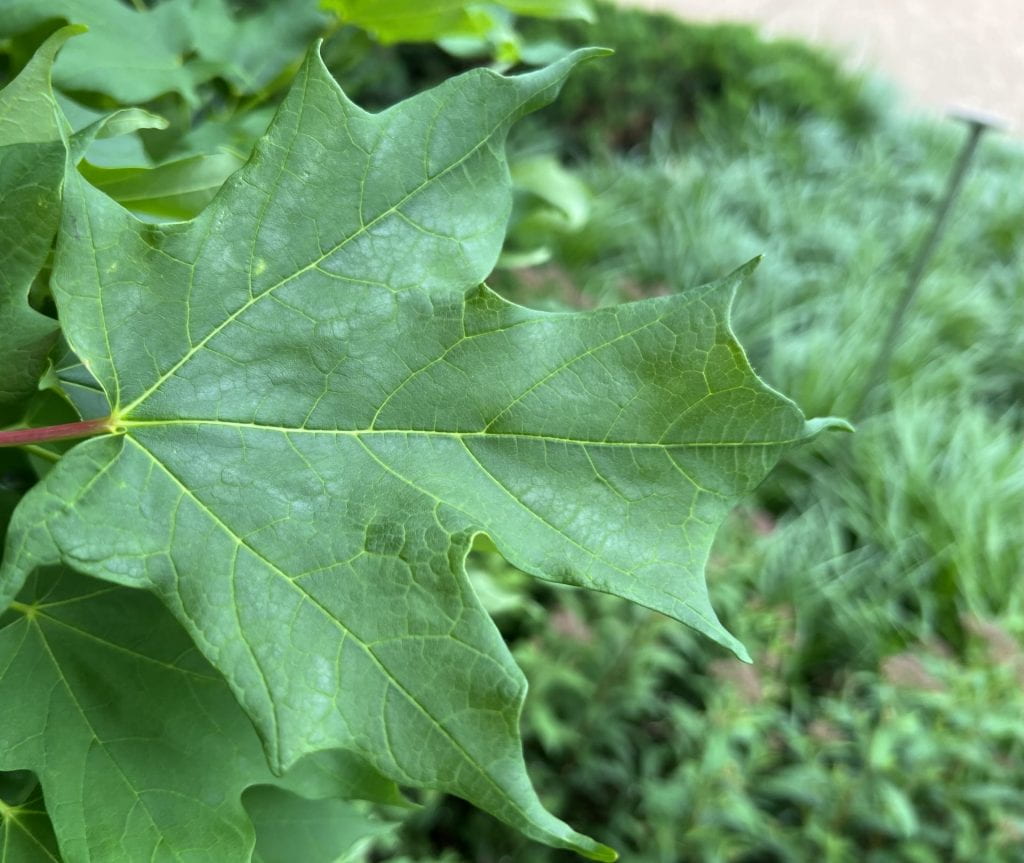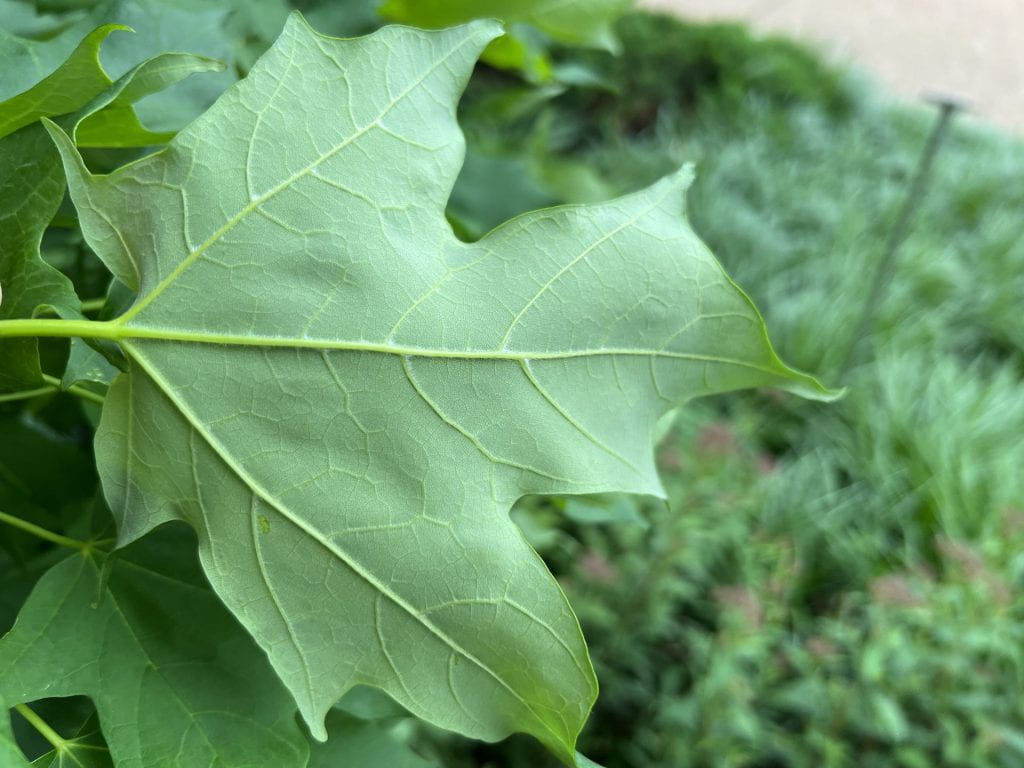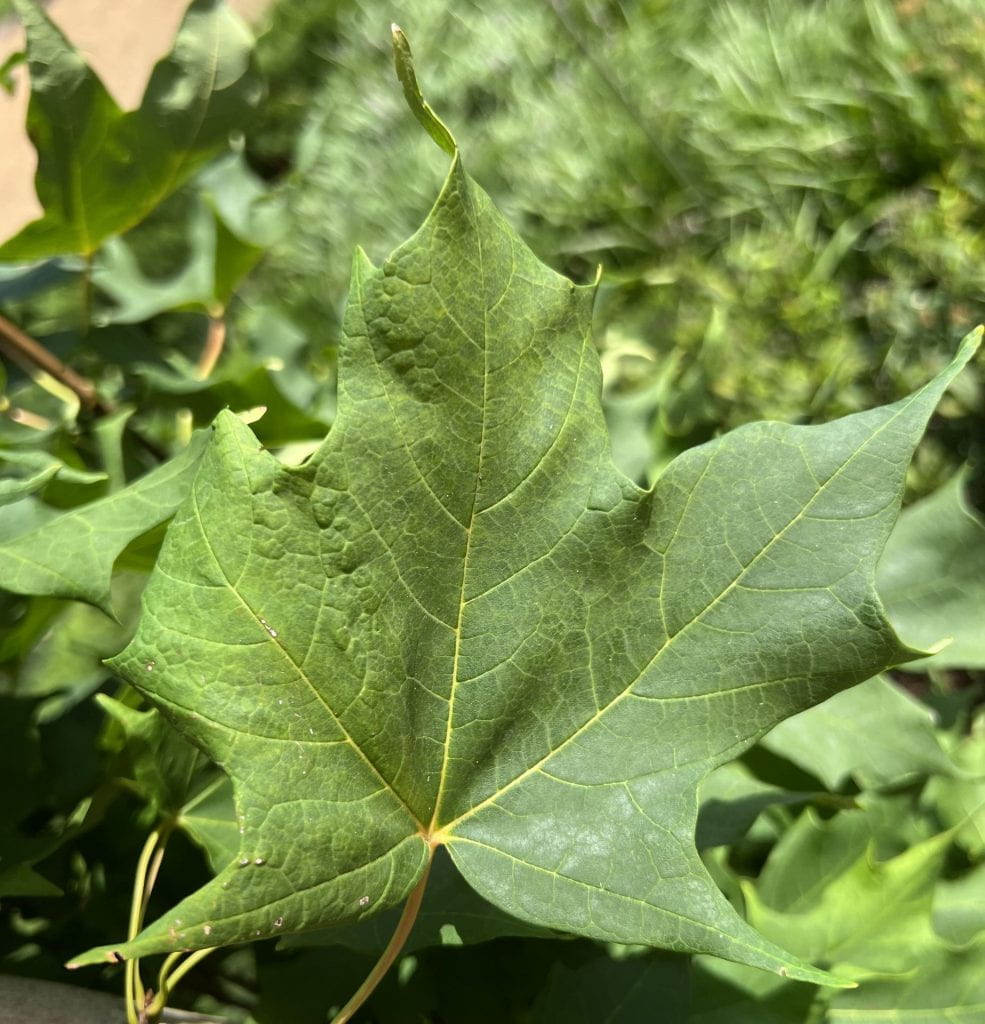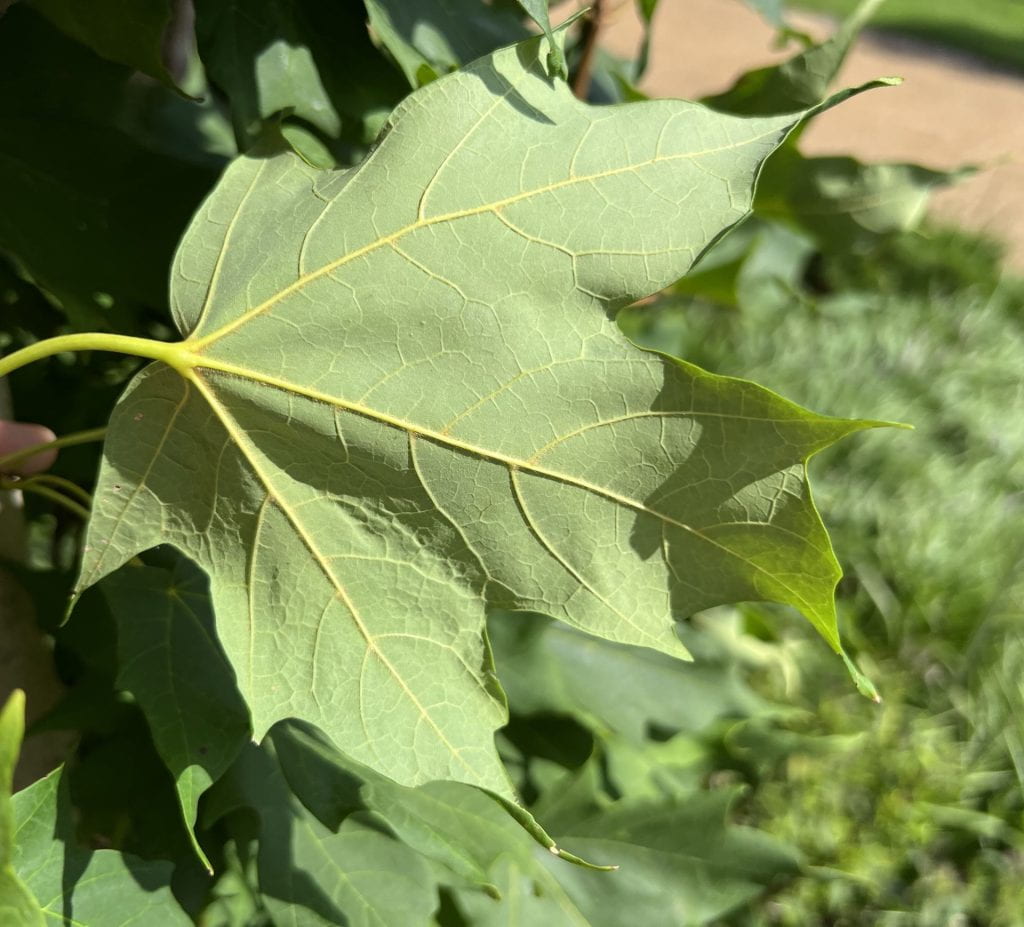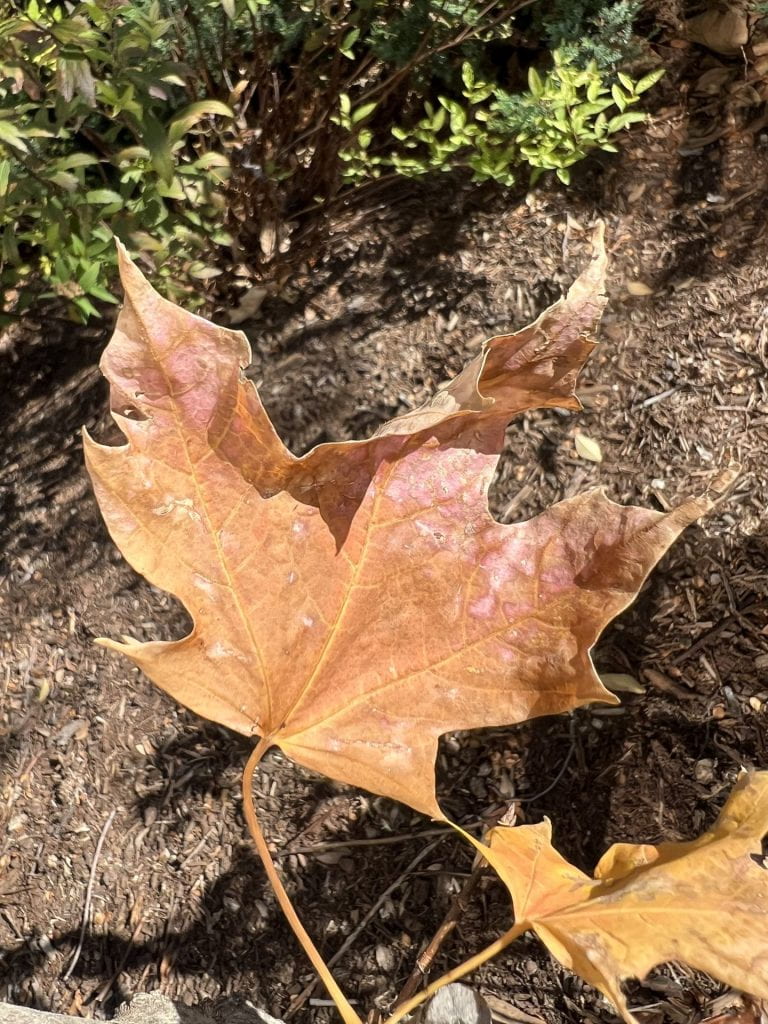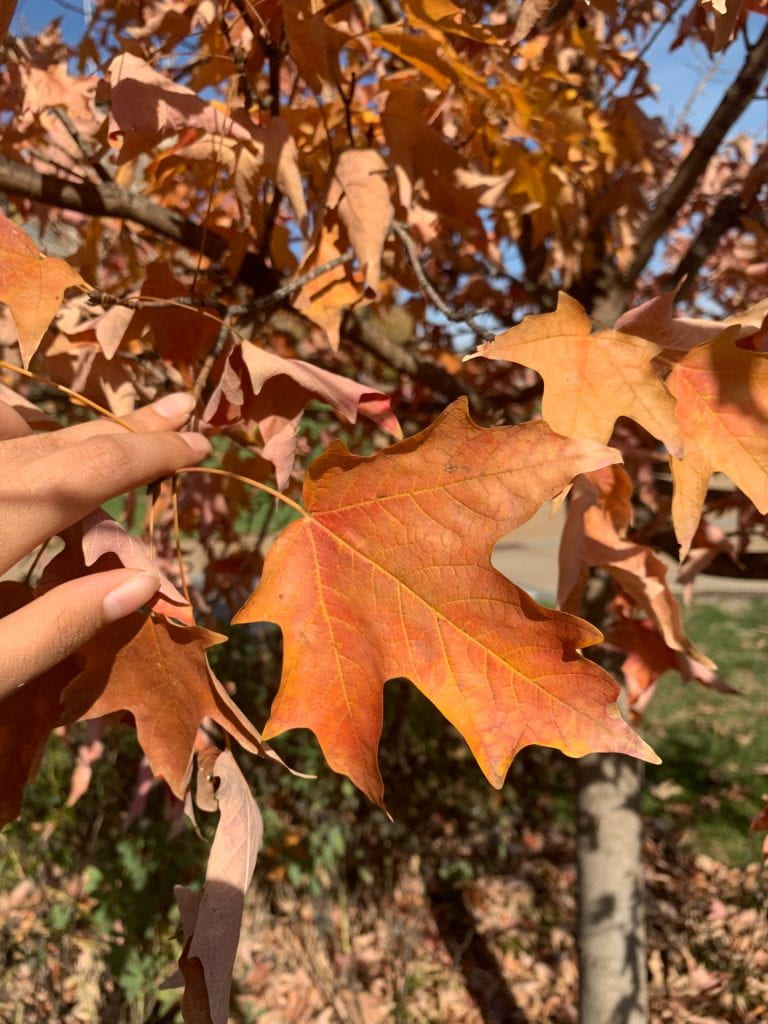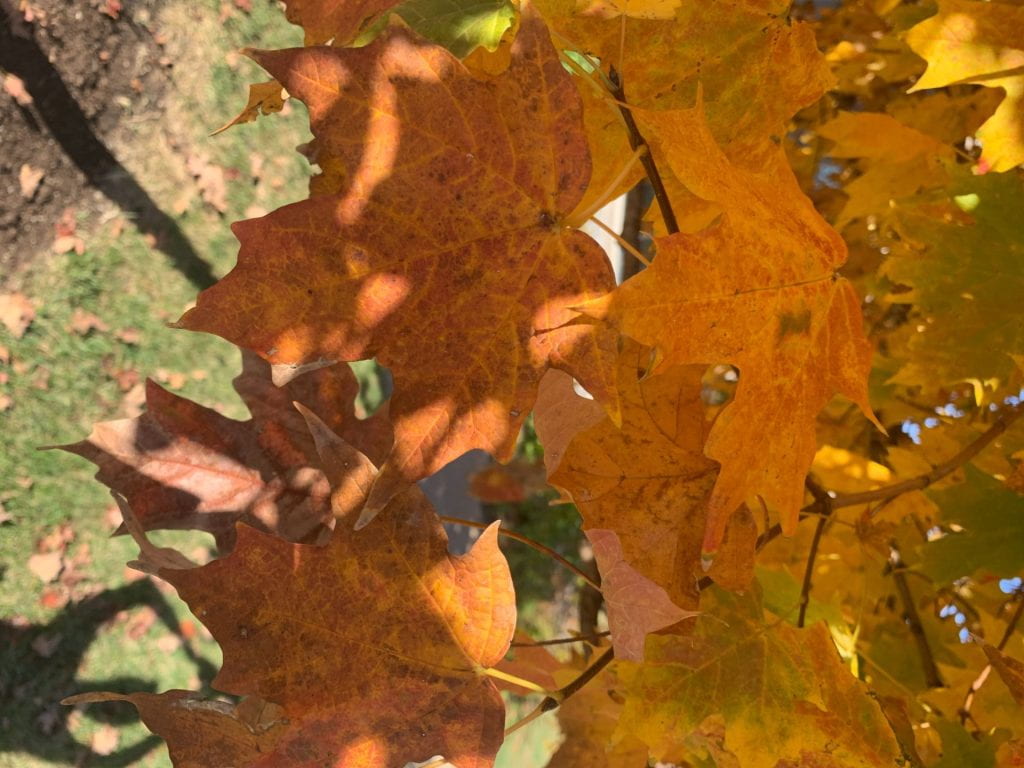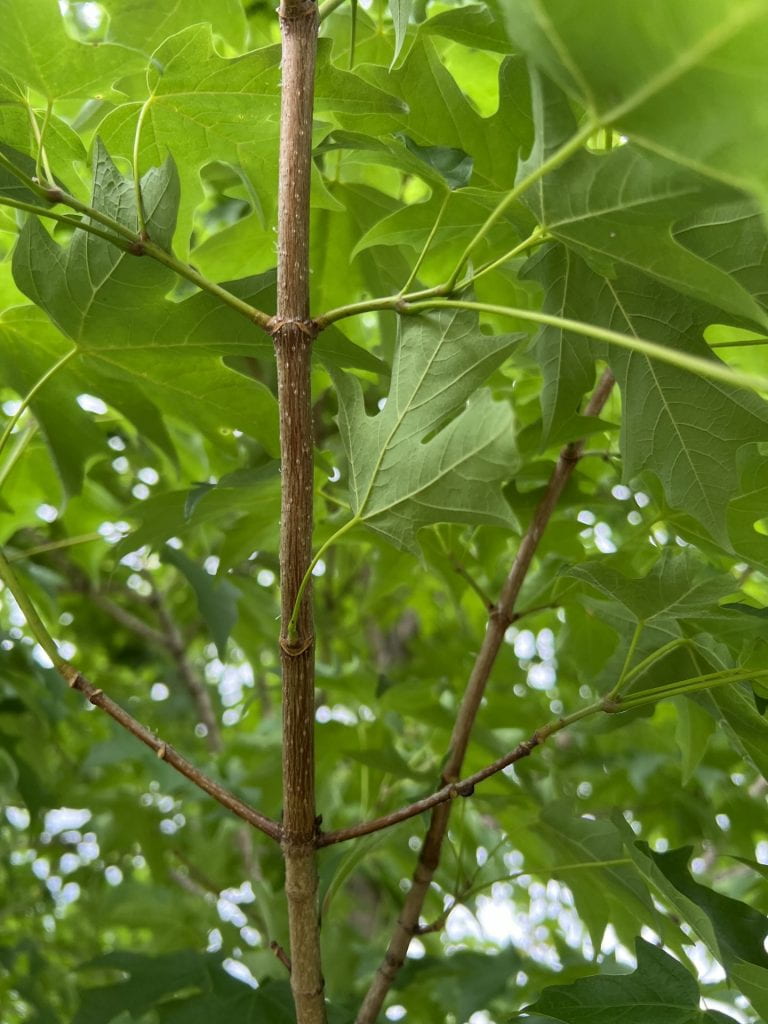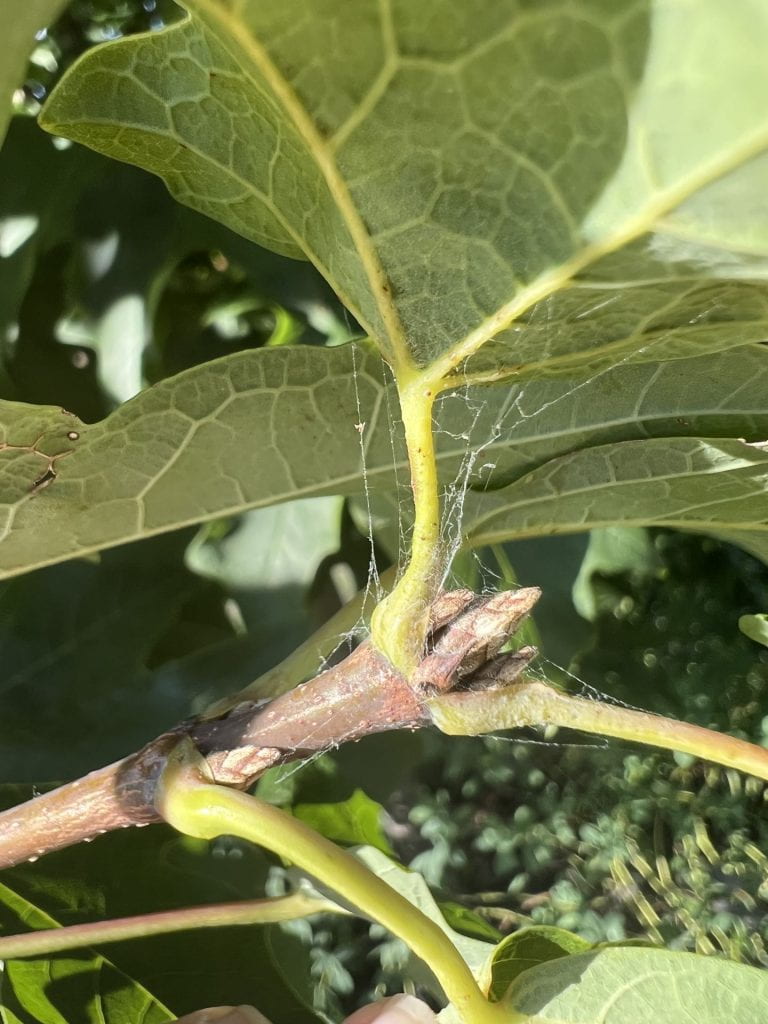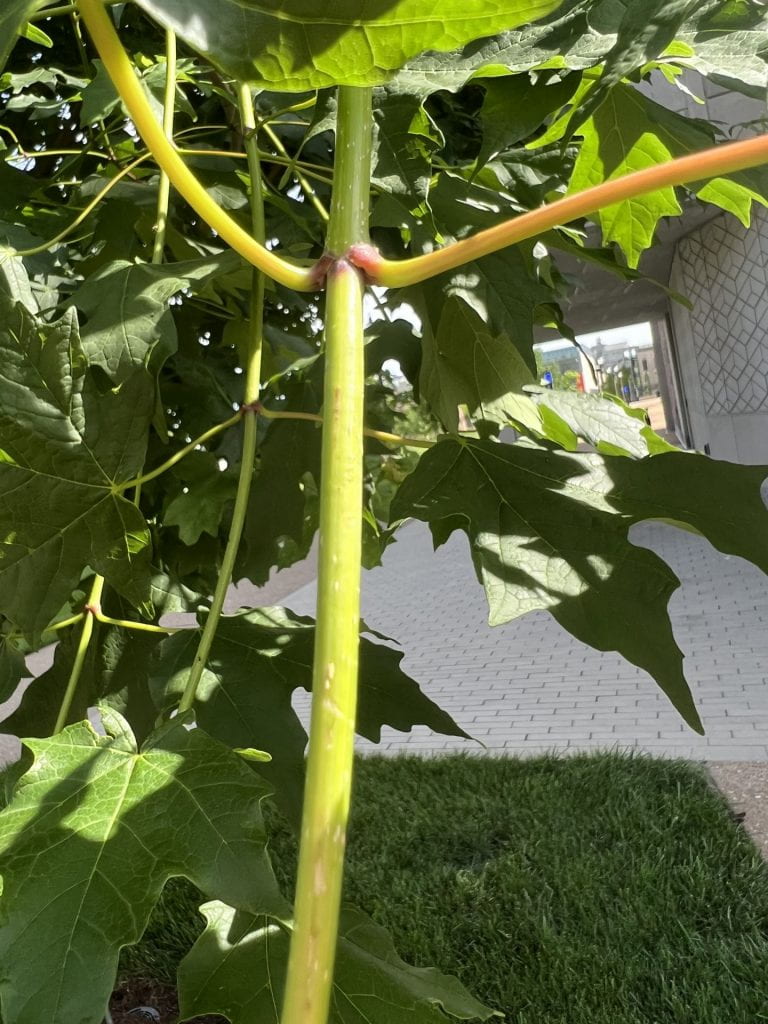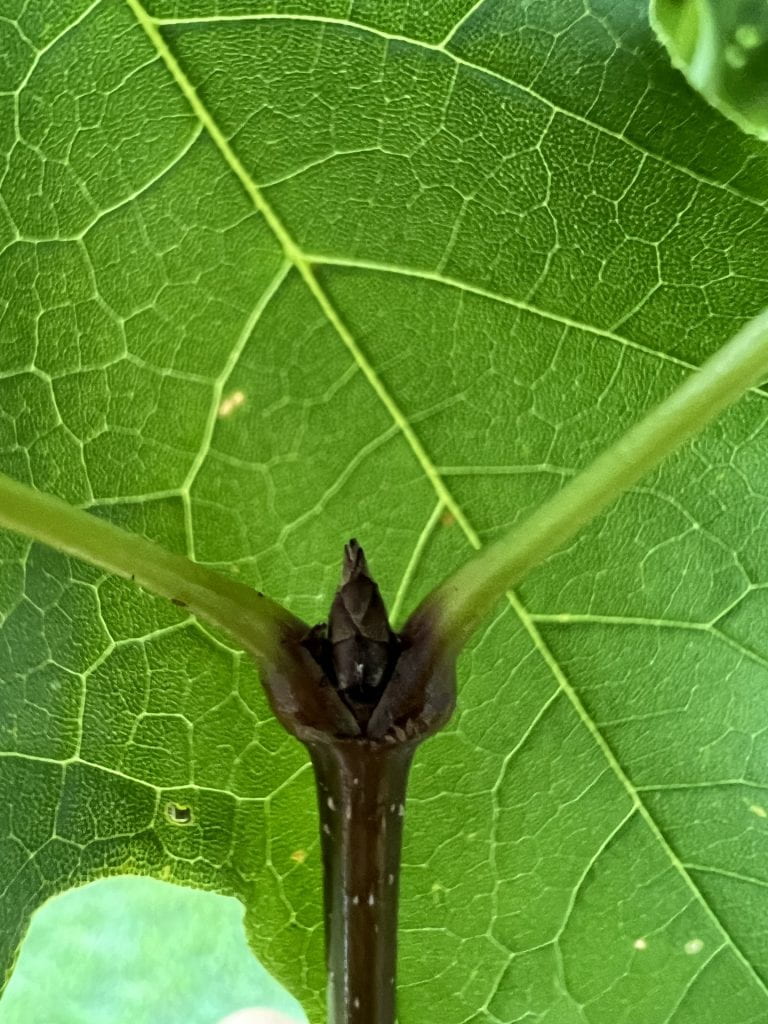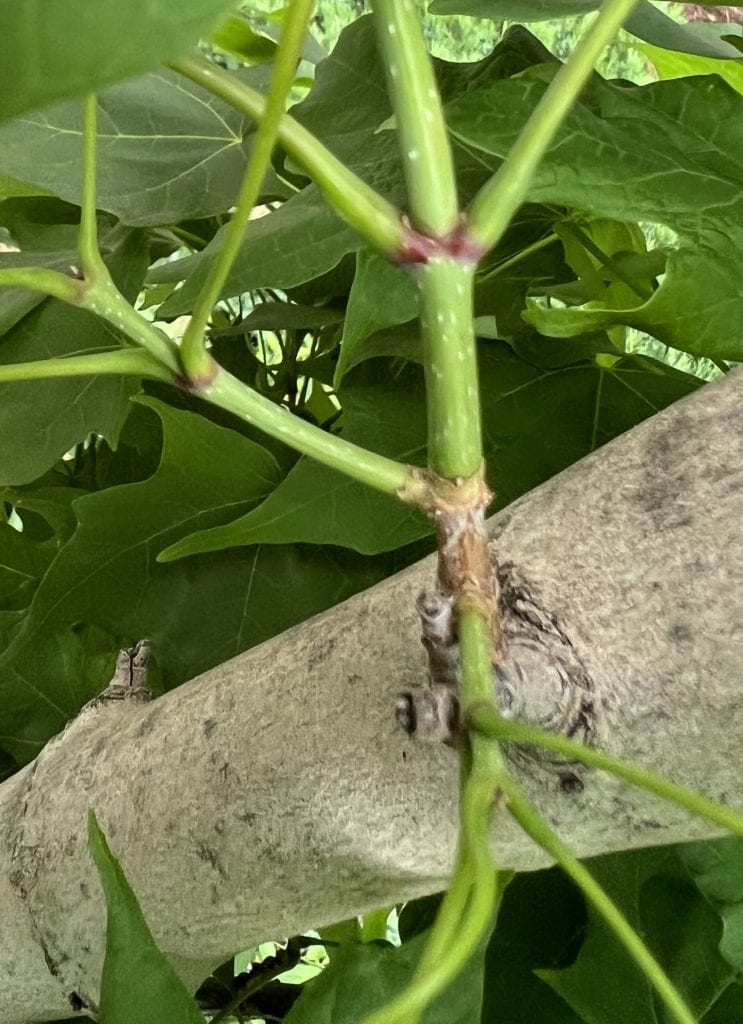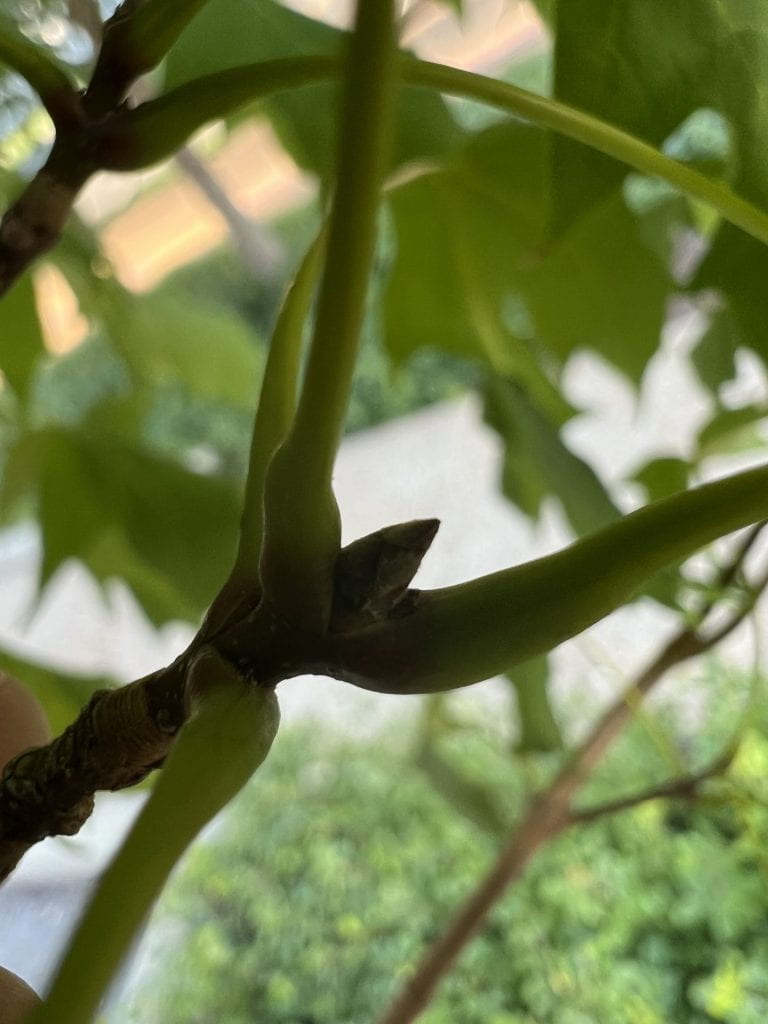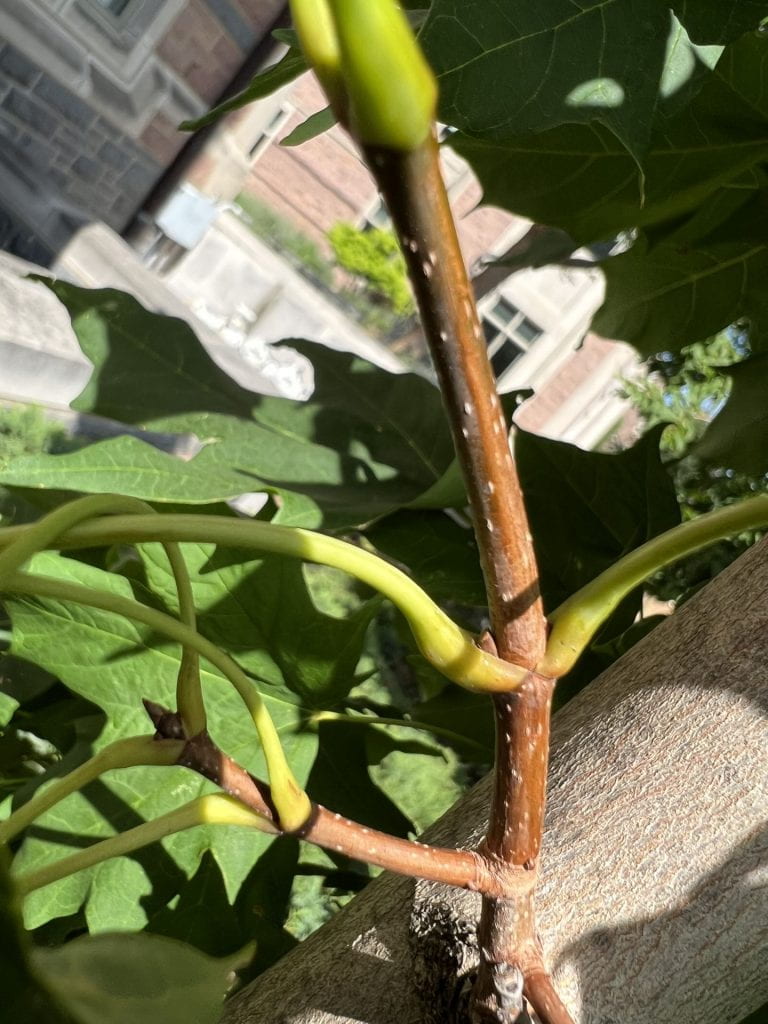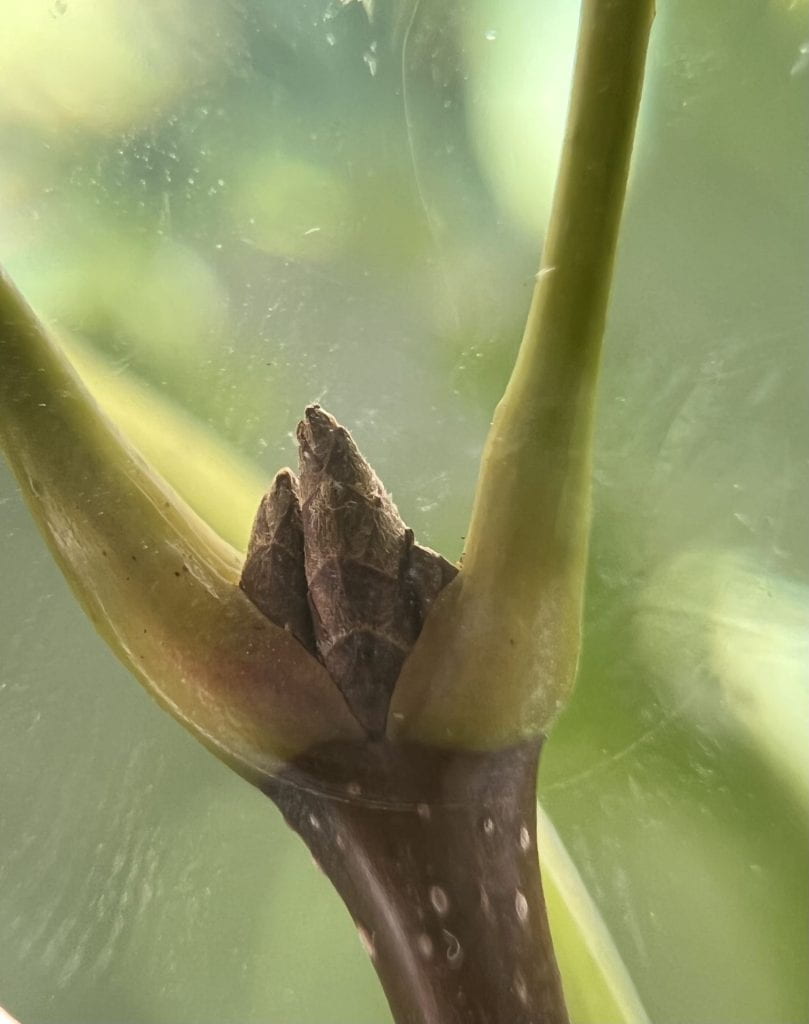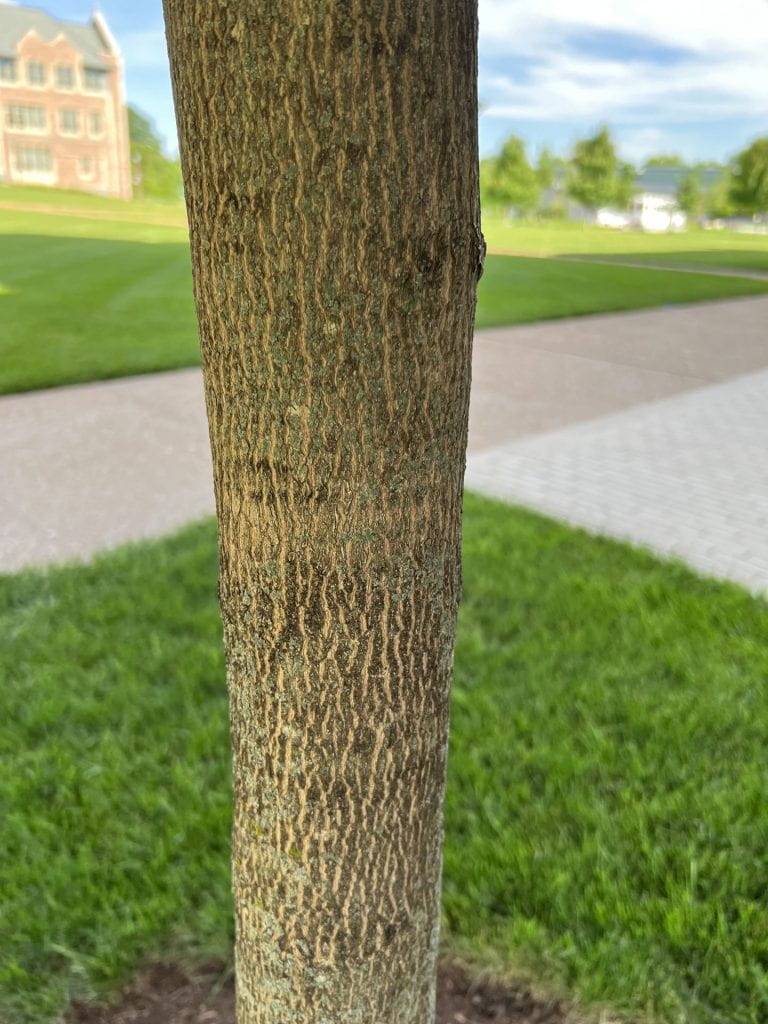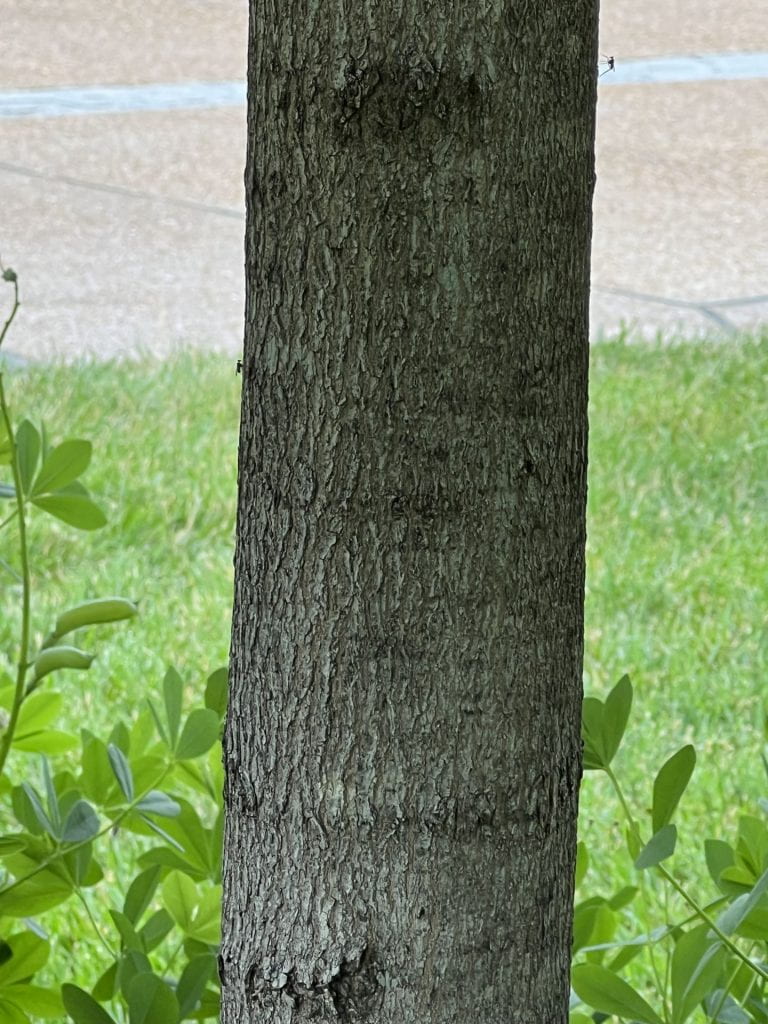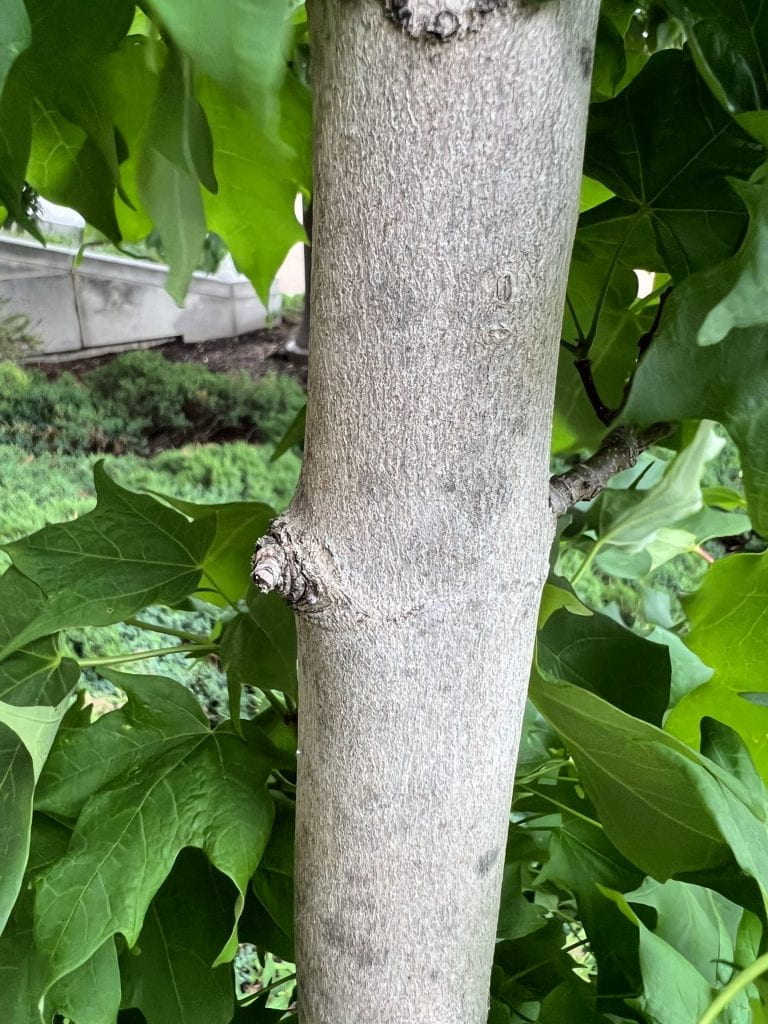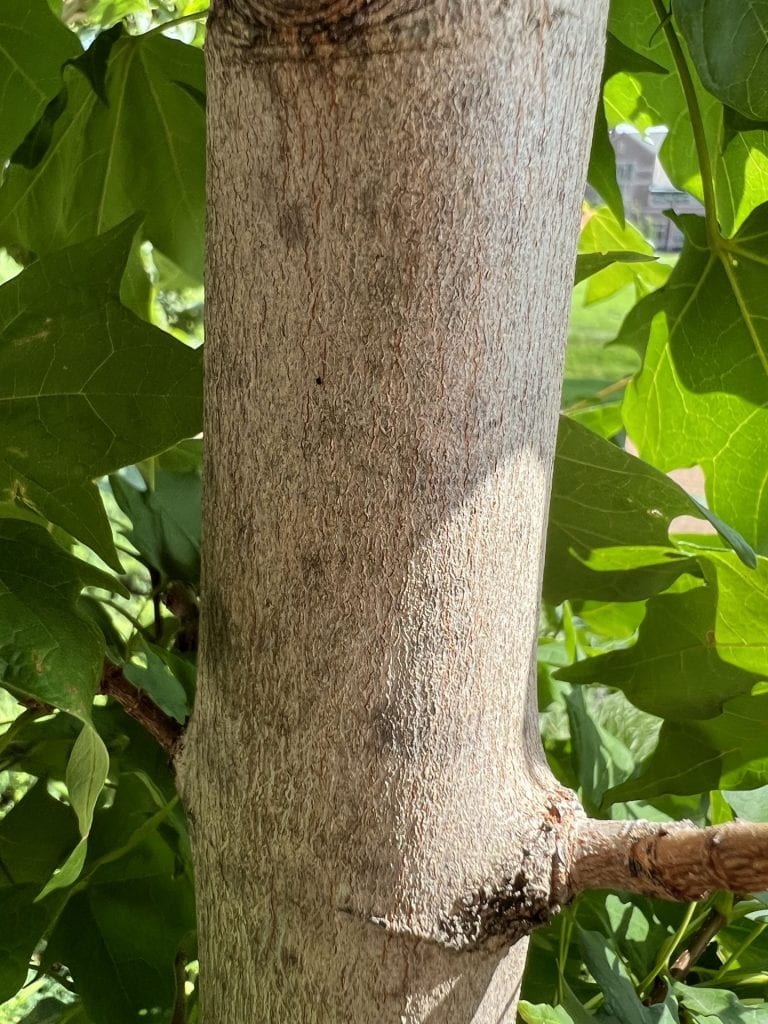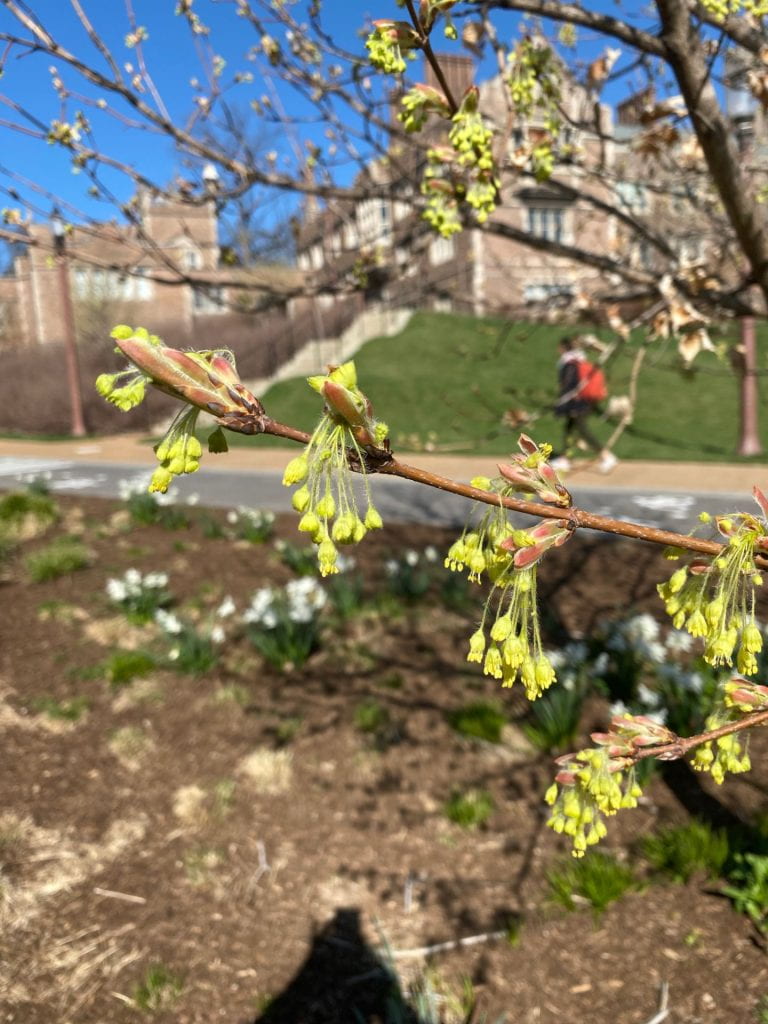Sugar Maple
Arbor Walk #87, Treekeeper ID #5825
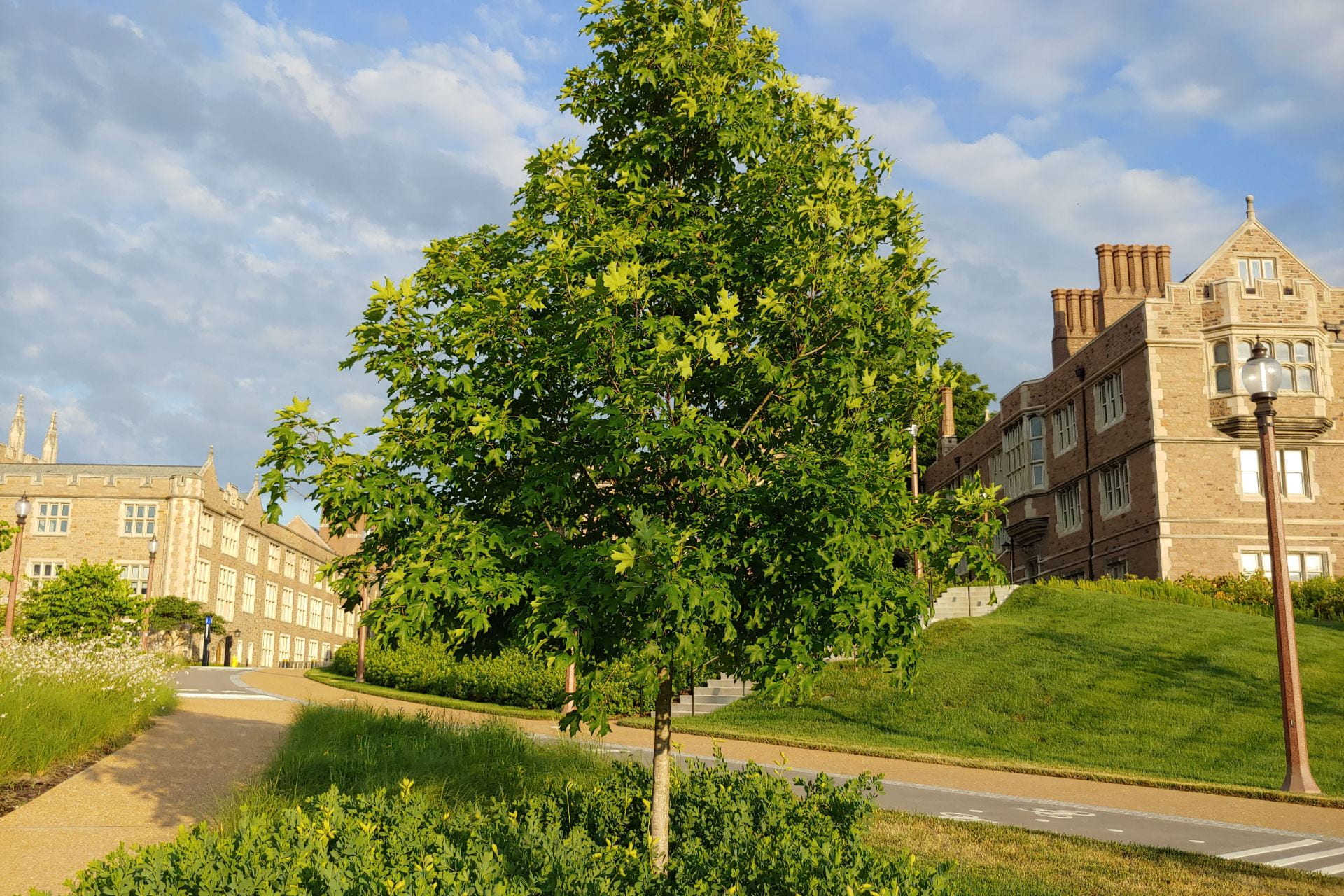
‘Bailsta’ is a cultivar of the Sugar Maple. It can grow to 50′ tall by 40′ wide, with a much wider, more rounded form than most Sugar Maples. The Sugar Maple prefers to grow in cool, wet areas with soils that are not dry but also well-drained. With such mesic preferences, it is widespread throughout much of the Northeast United States and Southern Canada.
More information on the Sugar Maples in our Arboretum here, here, and here!
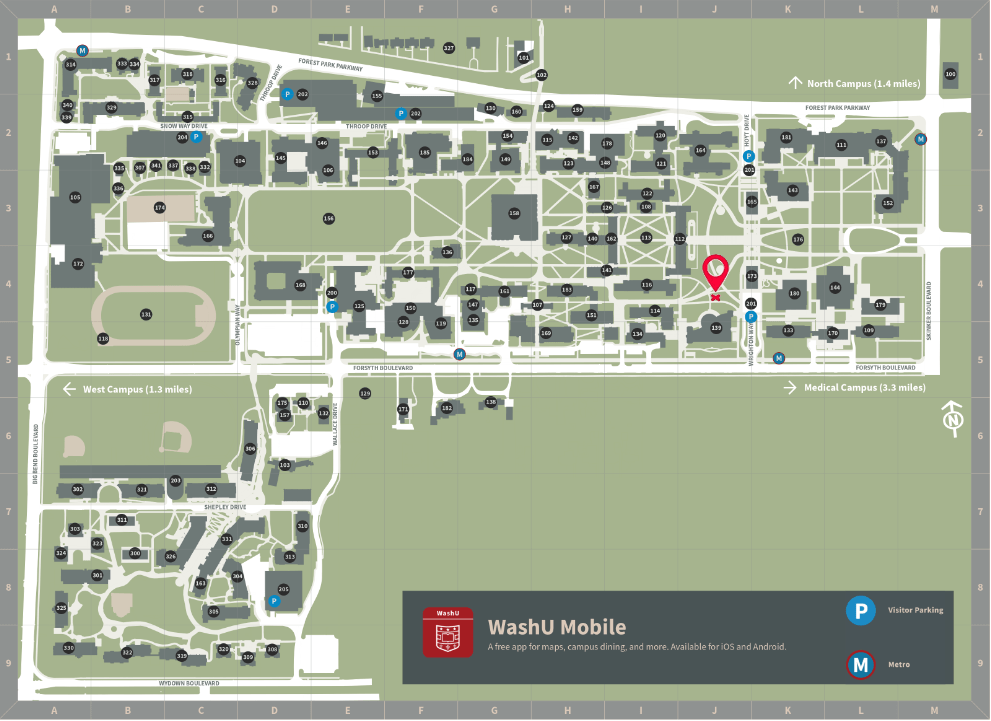
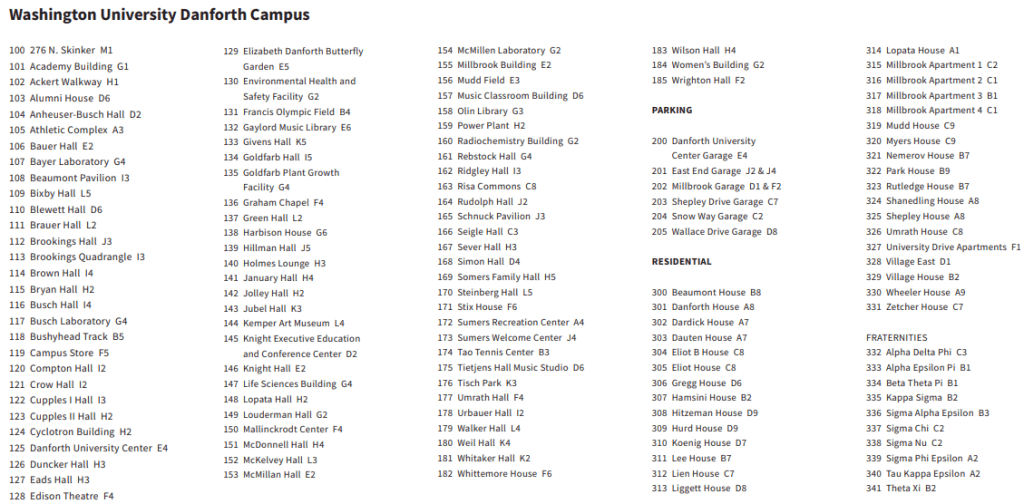
GPS Coordinates
N/A
Percent Concrete
N/A
Distance to Buildings
| Year | Close Building #1 | Close Building #2 | Close Building #3 |
|---|---|---|---|
| 2020 |
Distance to Other Species
| Year | Close Species #1 | Close Species # 2 | Close Species # 3 |
|---|---|---|---|
| 2020 |
Standard Measurements
| Year | Height (m) | DBH (cm) | Caliper (m) | Crown Diameter N-S (m) | Crown Diameter E-W (m) | Average Crown Diameter (m) |
|---|---|---|---|---|---|---|
| 2023 | 6.58 | 11.5 | N/A | 4.02 | 4.07 | 4.045 |
Nests and Pests
| Year | Description |
|---|---|
| 2023 | N/A |
Leaf Identification
The leaves of the Sugar Maple are simple (no leaflets), oppositely arranged on the stem, palmately veined, and lobed. Technically, the Sugar Maple has 5 lobes, although the two basal lobes are not as large as the others, but they each have a major vein along their length. The upper lobes are set at ~45 degree angles from each other with deep sinuses, and are pointed at the tip, often with multiple tips on one lobe. The leaf is green and turns a variety of autumn hues in the fall.
Twig and Bud Identification
The twig is light brown with lenticels (pores), not zig zag, and knobbed at the leaf axils. While the axillary buds are minuscule and can be hidden under the petiole, the terminal buds are many-scaled, pointed, and clustered in threes, with the middle bud being the longest.
Bark Identification
The bark of the Sugar Maple is smooth and gray-brown when young. Over time, it develops vertical markings that form light brown thin vertical plates.
Fruit Identification
The fruit of the Sugar Maple is a double samara (seed with papery winged seed coat), attached such that the two samaras form a U- or V-shape. They will turn brown as they mature. They ripen at the start of fall.
Flower Identification
The flowers are in drooping yellowish-green clusters, with apetalous flowers. The sugar maple may either be monoecious or dioecious. The flowers bloom in early spring.
‘JFS-Caddo2’ Identification
This cultivar features exceptionally vibrant red coloration earlier in the fall, as well as better resistance to summer heat and mildew than the species tree.
‘Bailsta’ Identification
This cultivar is more winter resistant, as well as being a quick grower and rounded in form. The leaves are more glossy and waxy than the wild-type tree.
‘Caddo’ Identification
This cultivar is more resistant to heat, drought and urban pollution compared to the species tree.
‘Monumentale’ Identification
This cultivar is tall and narrow, with a thin cylindrical shape. This cultivar will only reach 30′ in height, but still provides nice orange fall color.
